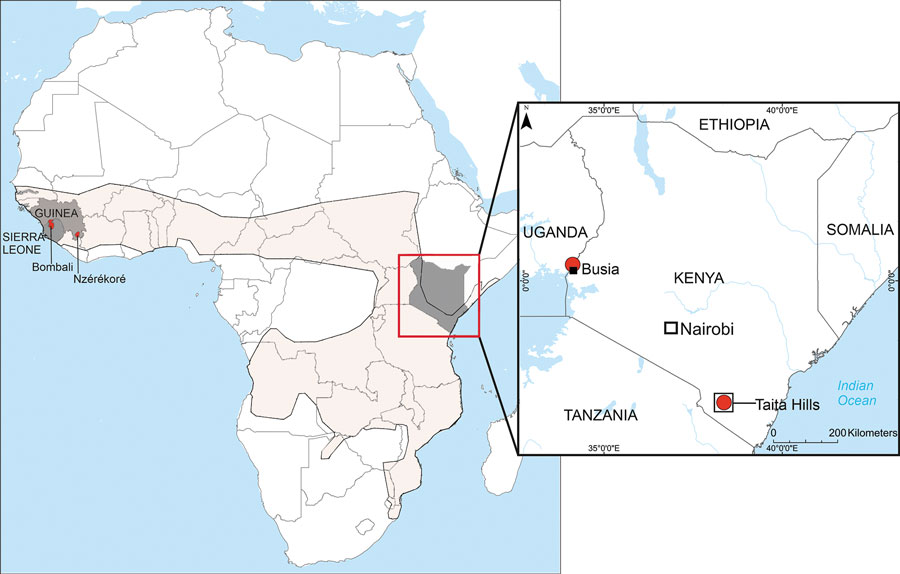Volume 26, Number 12—December 2020
Dispatch
Range Expansion of Bombali Virus in Mops condylurus Bats, Kenya, 2019
Figure 1

Figure 1. Known locations of bats infected with Bombali virus (BOMV) in Africa. The main map shows the 3 countries—Sierra Leone, Guinea, and Kenya (dark shading)—where BOMV-infected bats have been identified and the geographic range of Mops condylurus bats (light shading). The inset map shows the 2 sites in Kenya (red dots), »750 km apart, where BOMV-positive M. condylurus bats have been found.
Page created: September 30, 2020
Page updated: November 23, 2020
Page reviewed: November 23, 2020
The conclusions, findings, and opinions expressed by authors contributing to this journal do not necessarily reflect the official position of the U.S. Department of Health and Human Services, the Public Health Service, the Centers for Disease Control and Prevention, or the authors' affiliated institutions. Use of trade names is for identification only and does not imply endorsement by any of the groups named above.